Regarding pea soup: I'd rather not
Chris: Ellen, we’re pretending that today is Sunday, March 29th, and we’re also pretending we’re headed to Windmill Nursery in Buellton, just a piece up the road from Pea Soup Anderson’s (and if you know me at all, you know I can’t stand pea soup. Can’t even pretend to).
Ellen: I do want to note that the thing I miss the most about the beginning of Trials is our ritual of going to Spencer Makenzie’s Fish Company in Ventura and ordering the exact same thing we’ve ordered for the past dozen years … I don’t wanna wait a whole year for my fish tacos! (And that delicious Ahi Pocket thing. So good.)
Chris: Enough of that food talk! You’re making me hungry. On to the work at hand, Spring Trials Day 3, in which we would have had two stops: Dümmen Orange, at a new site, the Avila Beach Golf Resort, which I was definitely looking forward to seeing, and then Windmill Nursery, home of Kientzler and J. Berry. Ellen, I do believe it’s your turn to give us the lowdown on the highlights, yes?
Ellen: It is, indeed. Let’s see if I remember how to do this. I’ll dive into the deep end of the pool—the folks we “saw” this day with the most amount of stuff—and that would be Dümmen Orange.

Dümmen Orange: A roller coaster ride
Ellen: Marketing Director Chris Berg did his best recreating the Trials experience for us. He even included a few short videos of himself with the new introductions—really, it helped! We’ll link to that compilation below. But let’s start with what Chris (Berg, not Beytes) showed us first—a new compact member of the dark-leaved I’Conia hybrid begonia family called Bacio. Bacio (which means “little kiss” in Italian) is a scaled-down version of the I’Conia Portofinos (which is for 6- to 8-in. pots) that's well-suited for 4- or 5-in. pots or quarts. The Bacios come in four colors—Peach, Salmon, White and Orange (shown below). The I’Conias are great in full sun and shade.
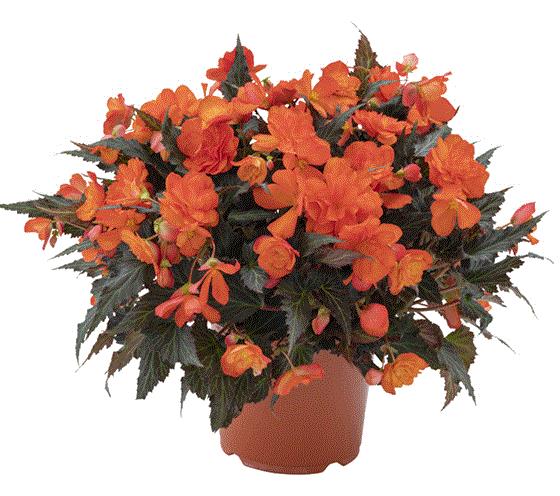
Begonia I'Conia Bacio Orange
Next up is an addition to the Roller Coaster New Guinea Impatiens series. Roller Coaster Hot Pink, with its large, double, curvy-margined petals was introduced last year. This year, five new colors join Hot Pink: Cotton Candy, Racer Red, Valravn Violet, Tangy Taffy and White Lightening. That curly edge really is different!
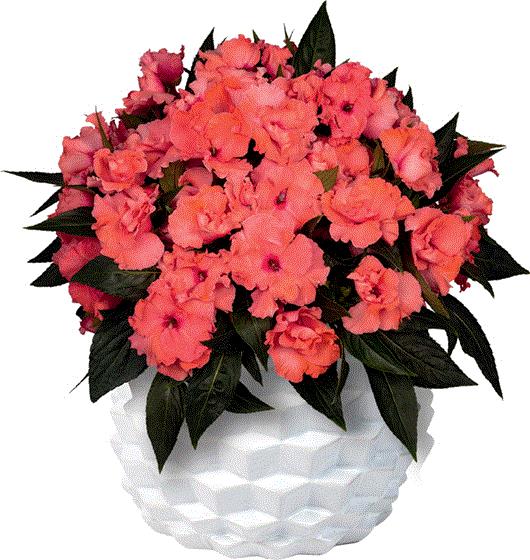
New Guinea Impatiens Roller Coaster Tangy Taffy
Mass plantings of solid-color coleus can’t be beat as attention-grabbers. Dümmen’s Main Street Beale Street is one of those eye-catchers, for sure. In fact, it caught the attention of the All-America Selections award judges who picked Beale Street as a national award winner for 2020—the first coleus to win an AAS award! This large-leaved red is late to flower and doesn’t bleach, fleck or spot under high-heat conditions. Beale Street brings the number of varieties in the Main Street series to 16. That’s alotta coleus!

Coleus Beale Street—an AAS winner!
Let’s talk about a new petunia series, shall we? DuraBloom is a first in interspecific petunias for Dümmen. It’s bred for strong roots to endure heat and drought. It’s beefy and tough, Chris says, and is great in combos because it mingles well. It blooms young in 306 packs and could be compared to Proven Winners’ Vistas, he adds. There are seven awesome colors, including Electric Lilac and Royal Pink (introduced last year). A breakthrough in petunia breeding? We’ll see—once I get some samples (and maybe you get some samples, too).
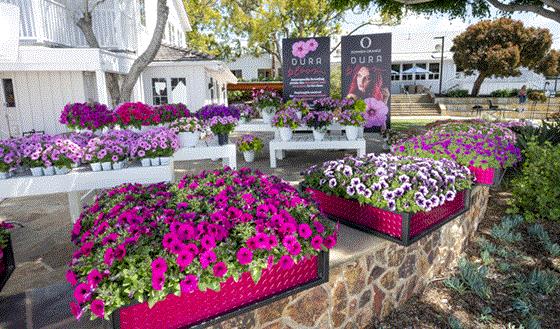 The name DuraBloom means durable and pretty.
The name DuraBloom means durable and pretty.
In addition to a few new colors added to existing lines (Watermelon in the Big EEZE Geraniums, Gold Medal in the Hula Calibrachoas, Limoncello in the Hypnotica Dahlias—gorgeous!—and the Better Together combos featuring only varieties of Big EEZE Geraniums and Main Street Coleus), I want to tell you about one of their new perennial additions, the Woodlander series of phlox. It’s an interspecific groundcover perennial phlox with blooms that are larger than the subulata types, so they’re bigger and more appealing at retail. Four colors in all—Rose, Lilac, Pink and White. I suspect Paul Pilon will talk more about this collection in his Perennial Pulse newsletter.

Phlox Woodlander Rose
For a more detailed look at four of the above introductions, click HERE to watch Chris Berg's excellent video.

Meet Cleopatra
Steve Rinehart took us through Kientzler’s top intros for 2020-2021, starting off with a surprising variety—a Cyperus prolifer called Cleopatra. While this member of the sedge family isn’t new, nor is it quite as showy as some others on the market, Kientzler’s application of it is a novel take on production: stick an unrooted stem cutting in the center of a combo container and plant the rest of the components around it. Cleopatra wil root, grow and finish along with the rest of the combo. They’ve done the testing and found there’s no reason to grow the cyperus separately from the rest. You get a “thriller” that’ll save you time and money—and aggravation, too, I’d imagine.
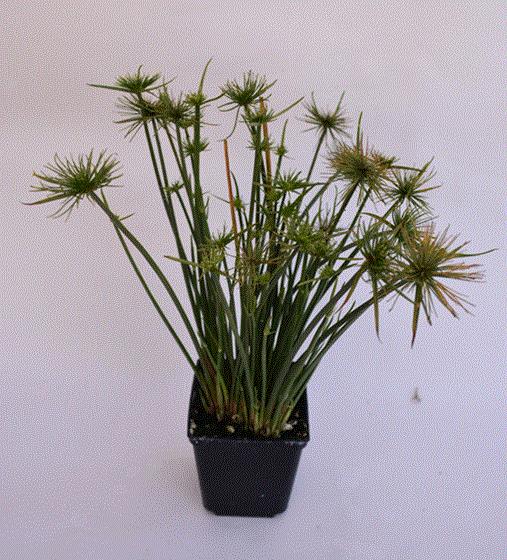
Cyperus Cleopatra
Next up is something I’d call an accidental success story. There was a eupatorium called Elegant Feather in the trial beds at Plantpeddler last summer, serving as a fine-leaved backdrop plant. That specimen was voted by visitors as the second-best plant in the whole trial—and it wasn’t even in the running to be voted on! Kientzler figured it was worth putting into production. It grows about 4-ft. tall, has super-soft, feathery foliage and doesn’t produce a significant flower.
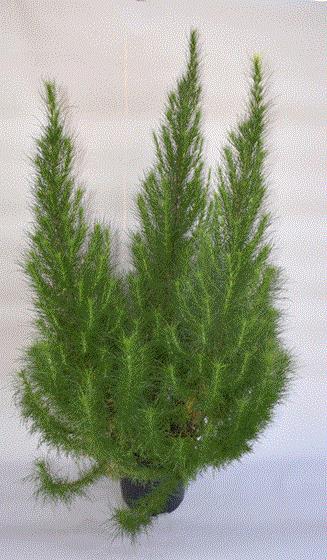
Eupatorium Elegant Feather
Another non-flowering intro for this year is Senecio Angel Wings. While not new or exclusive to Kientzler, the “new” part of the intro is that they offer it as an unrooted cutting instead of the more-expensive tissue culture. It’s sold out through August, Steve mentioned, but he also mentioned it's become a popular component plant to combine with poinsettias. Now that’s a look I’d like.
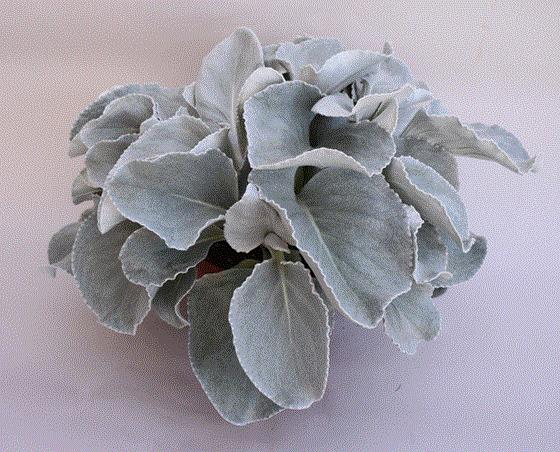
Senecio Angel Wings (from URCs)
Steve Rinehart isn’t just a poinsettia breeder—he’s doing a lot of breeding in heliopsis, which he makes available through Kientzler. This year’s Punto Rosso Compact is one example of that. It’s a first-year-flowering perennial that will bloom May through October—pretty unusual in a perennial. It’s a Zone 3 perennial that’ll even flower down into Florida.
Kientzler also has some additions to existing series for some categories they’re known for. Their scented Nemesia Fairy Kisses gets a Vanilla Berry (now four colors in the series), the tight-yet-full Pocket series of calibrachoa gets a Dark Pink and Apricot Eye (for four colors total), and the Paradise series of New Guinea impatiens adds Orange Splash, which has pretty orange and white flowers that stand up above the foliage (that series now has approximately 200 colors … actually 22, counting Painted Paradise).
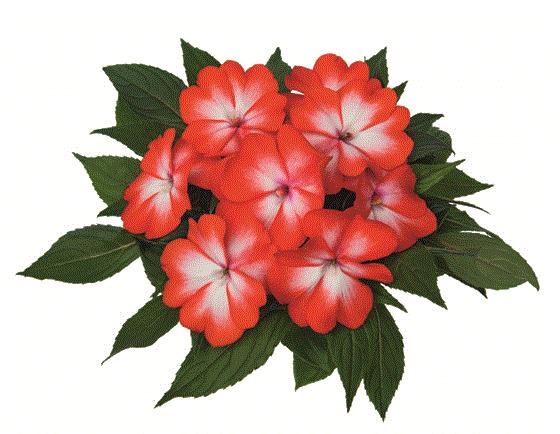
New Guinea Impatiens Paradise Orange Splash
Steve made a couple of Kientzler variety videos for your viewing pleasure: one on FLOWERS and one on FOLIAGE.

J. Berry hibiscus and crape myrtle
And then there’s J. Berry, who was also set to display at Windmill Nursery this year. The Bobbleheads didn’t actually get to Zoom meet with the Berry bunch, unfortunately, but we did receive some information from them. And from what we found in our Dropbox folders, this is what we can tell you we would have seen had it all gone down as planned:
In their Hollywood Hibiscus line they have two additions: Leading Lady, with lemony yellow petals and a white center; and First to Arrive, which is differentiated by deep red-ruffled petals and non-stop blooming. Both are good for containers or the landscape, and both have good disease resistance and compact growth.
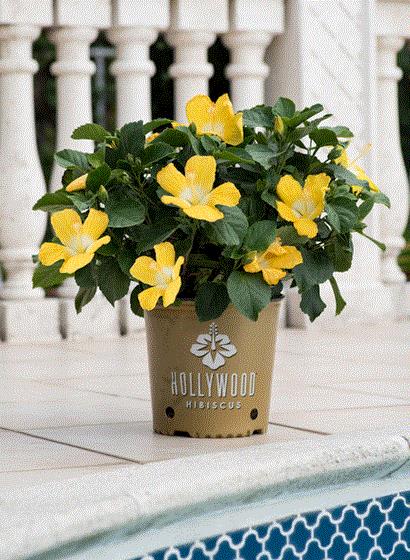
Hibiscus Hollywood Leading Lady
Also new from J. Berry is a new addition to their Black Diamond Crape Myrtle line. Radiant Red is naturally vigorous with large black leaves and ruby red flowers. Use this drought- and heat-tolerant plant as a hedge, focal point or container item.
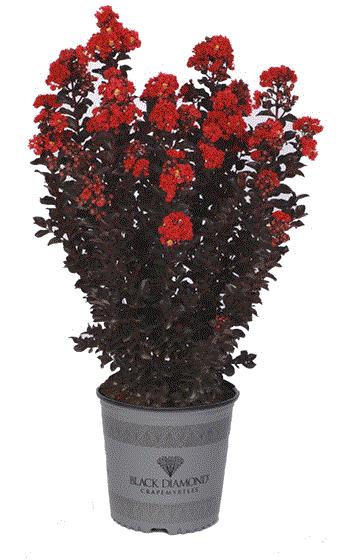
Crape Myrtle Black Diamond Radiant Red

That's a wrap on Day 3
Ellen: Whew! That’s a lot to cover. Do we have anything else to mention today, boss?
Chris: Only that we're only halfway through with our virtual “what would have been” look at the 2020 California Spring Trials. Tomorrow will be Day 4, which will include Sakata, Takii and Monrovia, among others. Stay tuned and thanks for reading! Oh, and if you have questions or comments, just click on my name or Ellen’s below and drop us a line.
Chris, Ellen, Jen & Bill
Chris Beytes
Editor
GrowerTalks/
Green Profit
Ellen Wells
Editor-at-Large
Green Profit
Jen Zurko
Managing Editor
GrowerTalks/
Green Profit
Bill Calkins
Senior Editor/Digital Editor
GrowerTalks/
Green Profit
This email received by 26,737 lucky folks, and you're one of them!
Want to be one of the lucky sponsors who reach those 26,737 readers of Acres of Buzz from Spring Trials? Drop Paul Black a line and he'll tell you what a bargain it is!